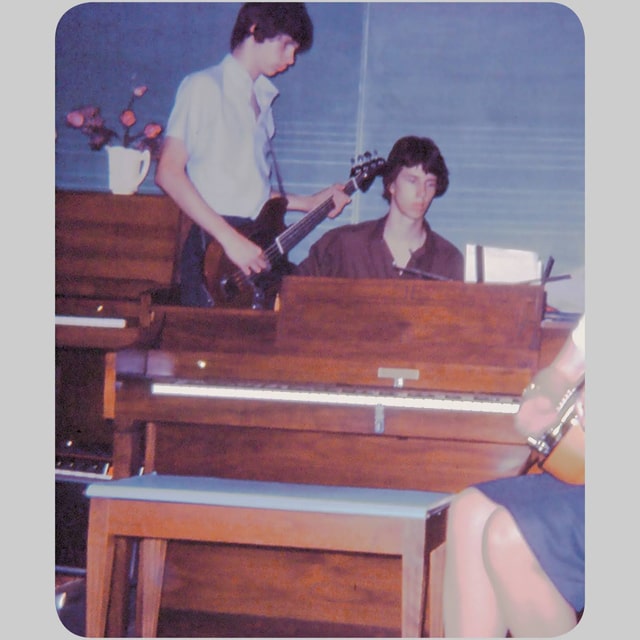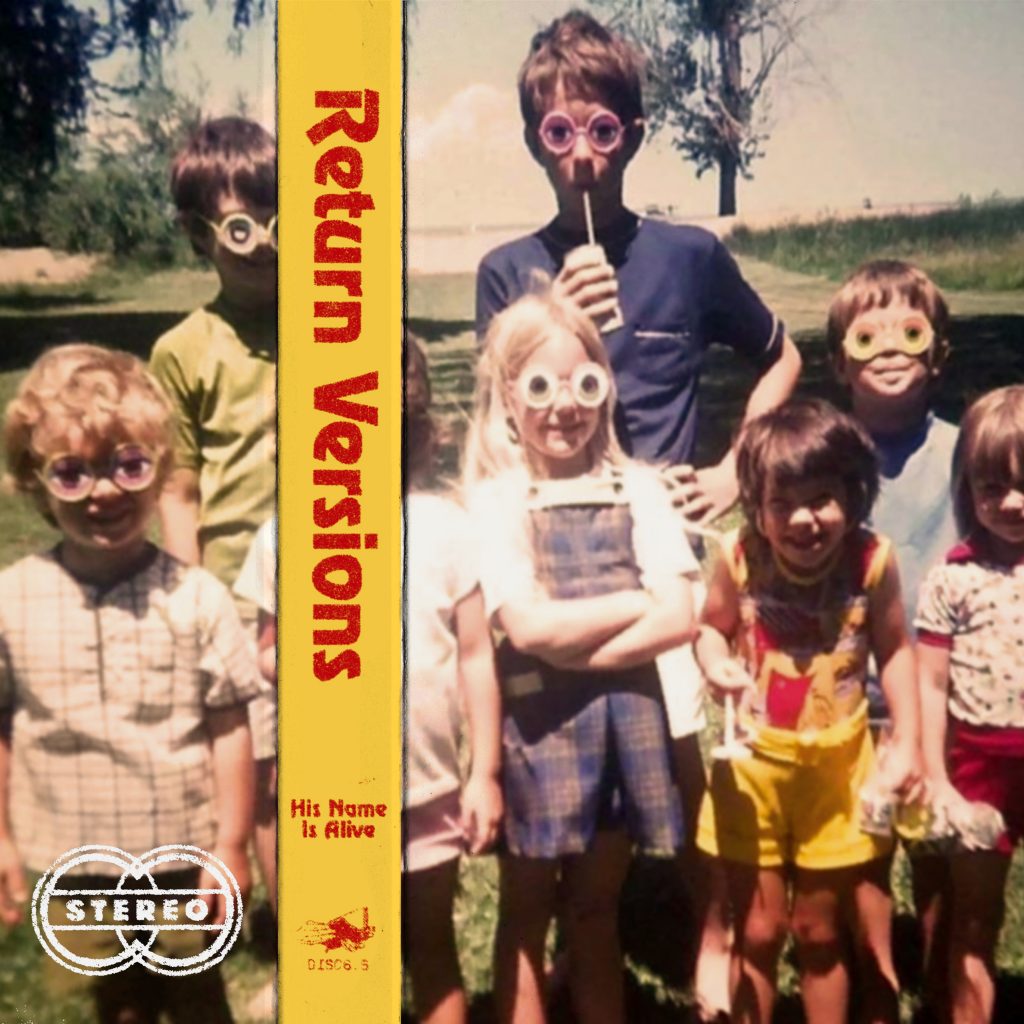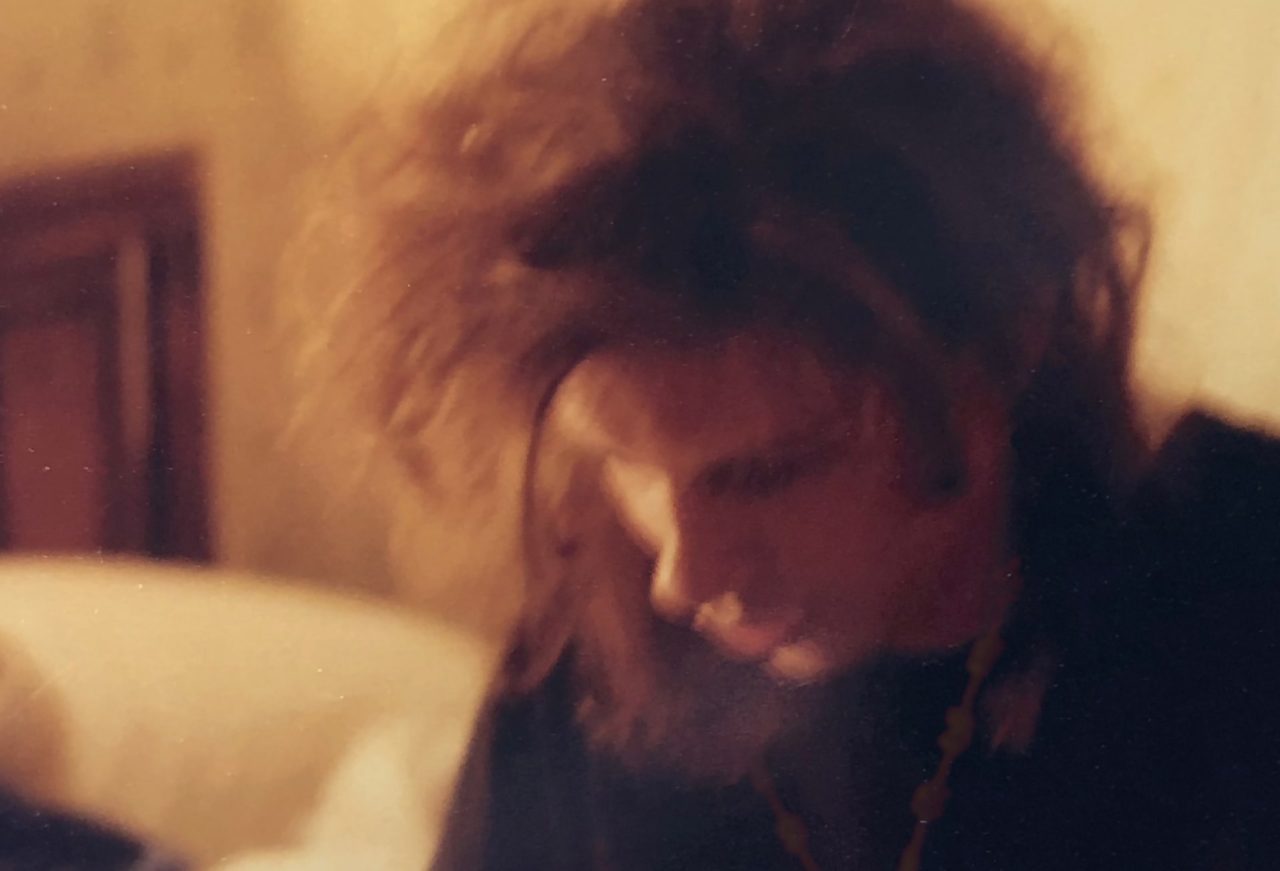During the past year that took so many things away from us, including the catharsis of live music, I’ve increasingly relied on listening to LPs in their entirety, rather than my iPod on shuffle.
All the Mirrors in the House: Early Recordings 1986-1990 (Disciples), the first of 3 volumes revisiting His Name Is Alive’s earliest cassette experiments, hit a perfect chord for me during this bizarre stasis-time we’re all trapped in; songs like “Piano Rev” feel unstuck in time and fathomless (a very now feeling). But it’s hopeful, too — it reminds me of standing at the edge of Lake Michigan at night for the first time. I just remember this vast, inky black inland sea with no edges, extending as far as the eye could see. It was awesome and transfixing, like staring into deep space.

When I met Warren Defever on a dreary, unremarkable night in 1993 to talk about HNIA, little did I know I would be circling back to that same conversation this many years later. In the ensuing years, Warren’s band — an ever-changing universe of collaborators, vocalists, and styles — has stayed a centerpiece of my musical life. And with the release of this trilogy — All the Mirrors, Return to Never and Hope Is a Candle — recorded in Defever family rec rooms, basements, and on dining room tables, the content of our discussion (the Livonia, Michigan, origins of the band) seems newly relevant.
Back then, trying to tease out information about the pre-4AD HNIA was tricky. “You released some cassettes before you got hooked up with with 4AD, right?” WD: “Right, the first cassette was called [garbled].” “What was it called?” WD: “Doesn’t matter.” “Has any of this stuff reappeared on albums?” WD: “Most of it appeared on Livonia. There are two songs on Home Is In Your Head that are older than any of the songs on Livonia. But I’m not saying which ones!” (You can read the entire piece here.)

I loved the heart-on-sleeve poeticism of those early records, and their collagist aesthetic was deeply appealing, too. But, as HNIA releases began to proliferate wildly, I quickly realized that there was no such thing as a HNIA “sound.”
There’s no greater proof of Defever’s musical and conceptual restlessness than band’s Discogs page, a dizzying place where genre is meaningless and rules are made to be broken. You never quite know *which* HNIA you’re gonna get — free jazz! MOR freakouts! New Age concept operas about murderous twins! – and that’s what makes them so delightfully inscrutable.
By contrast, these early recordings have a purity of tone and a clarity of vision (aided and abetted by the canny editing skills of Shelley Salant – Warren explains her contributions below) that set a perfect tone for what was to come, namely, the band’s groundbreaking releases on 4AD.
I asked Warren to share some of his creative process, then and now.
Revisiting your first experiments can be awkward, mortifying, revelatory, or all 3. Has the benefit of time helped you see some qualities in your own music you might not have noticed or appreciated before?
WD: I was recording the band Universal Eyes, which is made up of Wolf Eyes guys plus original members Gretchen Gonzales (Universal Indians/Slumber Party) and Aaron Dilloway.
When I forwarded the mastered files to Matthew Jones at their record label in the UK, Disciples, which handles reissues and archival-type stuff and is part of Warp Records, he asked me about a His Name is Alive tape on YouTube called “Early Works.” We had briefly released a cassette of pre-Livonia recordings 30 years ago and there’s been a mangled poorly dubbed bootleg version floating around on the internet for a while now. I told him that I kind of remembered that there was probably an album’s worth of earlier more “new age” jams that were way better. We worked out a deal for 3 LPs and 3 cassettes.
I hired Shelley Salant from Tyvek to transfer a million hours of my old tapes and notate the best songs.
Most of the stuff on the tapes is unlistenable nightmarish covers of U2, Bob Dylan and me playing guitar along with radio hits of the early 80s. The only thing preventing me from destroying all these embarrassing recordings is this vague recollection there were maybe 35 minutes of good ideas. I hope to never again to subject anyone (including myself) to these horrible tapes again. We have located the good parts and released them now, so we’re good. Hearing the good parts now it’s clear that the formula was to record often and record a lot. Ideas were recorded as they were being written and then discarded. It was all very in the moment.
Hearing the good parts now, it’s clear that the formula was to record often and record a lot. Ideas were recorded as they were being written and then discarded. It was all very in the moment.
WARREN DEFEVER
The humble cassette becomes a star of this series. Do you remember when you realized that the cheap, reproducible and readily accessible C-90 was your perfect blank canvas, allowing for infinite possibilities?
Kmart sold blue cheap low bias 60-minute tapes in packs of three; I can’t remember how much they cost but they were almost free. Sometimes my mom would buy them for me. They didn’t include a case or J-card so notes were scribbled on the label in a very small illegible font. Most of the notes penciled onto the tapes haven’t survived so we only have fragments of song titles: “F Choir,” “Something About Hope.” Did it say “Fuck Choir” or “Fun Choir” or “F Major Choir”? I don’t know – I can’t remember what I wrote. I do remember hating choir class so “Fuck Choir” is definitely possible but also it’s a recording of a choir and it’s not like a slow jam so your “perfect blank canvas” still allows infinite interpretations at least in the annotation department.
Tell me about Shelley Salant’s role in curating/reworking the source material for “Mirror” and “Never.” Was there any material that didn’t fit in the end?
I’ve worked with Shelley on a bunch of projects over the years and she’s really good at keeping secrets. Due to the personal nature of a lot of these recordings I knew I could trust her not to blab all over the internet about how terrible a singer I was when I was fourteen, or how terrible a harmonica player I was when I overdubbed my own terrible playing onto recordings of classic folk and blues recordings.
She developed a notational system and a special code to rate the quality of the recordings and where they fell on the new age/ambient spectrum. She literally transferred a hundred-plus hours of tapes, some of which included audio recordings of me watching cartoons and eating cereal. I can never repay her properly for the hours of torture and I hope she finds therapy for the suffering she surely endured. Getting back to your question, to clarify, most of the material did not fit the criteria and is horrible and unlistenable.
“All the Mirrors in the House,” in particular, feels like an extended hymn to me. Vols #2 and #3 start to bubble with the more familiar “HNIA sound” (dreamy, with bursts of noise). Was that when you started to feel as though you were ready to bring in your friends to expand on your nascent basement experiments? (See also: 1986 Battle of the Bands.)
“All The Mirrors In The House” focuses more on the earlier and more ambient/new agey type sounds, I didn’t really use those terms back in the day, I called it “feelings time.” Do they have a “Feelings Time” section at the record store? No. It didn’t really catch on as a genre but if we’re gonna talk about it, I’m gonna use my own words.
“Return To Never” leans a little more industrial or mechanical in nature.
Playing music with my grandfather was a great learning experience + one of the lessons was that everybody can play music, it’s not that hard; hand a person an instrument + they’ll figure something out.
WD
“Hope Is A Candle” includes very rough ideas that were re-used in later His Name Is Alive songs like “Beautiful and Pointless” or “Some and I,” so it should be more recognizable as HNIA. Also some of the songs on there were recorded directly before I started working on the Livonia album.
So I do slightly disagree about Vol. 2 but we’re friends we don’t have to agree on everything. What year was that show at the Pyramid Club in NYC? [1993.] We’ve been friends for a long time.
Playing music with my grandfather was a great learning experience and one of the lessons was that everybody can play music, it’s not that hard; hand a person an instrument and they’ll figure something out.

My grandma taught me how to play slide guitar which is basically a guitar laying flat on your lap, tuned so you strum all the strings simultaneously and slide a metal bar up and down the neck. I didn’t have any special talent or inclination but it was sitting there and the shiny metal bar caught my attention. I’ll admit if you’re playing polkas and waltzes that clarinet and accordion are a little more complex from a technical standpoint but drunk people play them all the time.
“Hope Is A Candle” revisits material that found its way to 4AD’s Ivo Watts-Russell and was ultimately reworked for Livonia. I’m curious if you remember when you first heard from him. Did he reach out to you directly? How important do you consider his early support to your musical development?
His support is still important to me today and I send him stuff I’m working on all the time. I’ve been very lucky to have had many great teachers and really I learn a lot from everyone I work with. I mostly work alone, unsupervised, but I do consider it important to have human contact from time to time. The details of the first couple phone calls from Ivo are somewhat forgotten but mostly he would criticize certain details (my drumming, my singing), compliment other details (Karin’s vocals), and then I would quiz him about British music and music business until he got annoyed and hung up on me. I had a lot of energy and a lot of questions.

Playing music with your grandfather was a huge formative influence for you. But he also believed, apparently, that popular music stopped with Hank Williams. Did your early explorations of rock n’ roll (1950s “devil music,” rockabilly, etc.) feel kinda illicit, like you were going against his teachings? And when did you start to connect the dots explicitly to the Detroit scene?
Yes, at some point I recognized that the old timey music I played with my grandfather for old people to square dance to wasn’t super cool and when I heard oldies radio, rockabilly, surf music, etc. I got really excited, it was the high energy crazy version. It wasn’t that different, it was just like total anarchy; it was the same kinda thing but electrified.
In the mid-’80s in Detroit the punk scene took a weird left turn and a whole subculture influenced by the Stray Cats, the Gun Club, X and the Cramps developed. I was ten years younger than most of the players but I was so excited to get asked to play in a band that combined Eddie Cochran and Motorhead styles. I was hooked.
Tell me about 3 records that rearranged your teenage mind.
Elsewhere I’ve talked endlessly about SPK, Danielle Dax and Zoviet France so today I’ll focus on ELO, “Out of the Blue” (1977): First record I ever bought, still love it. Thin Lizzy, “Chinatown” (1980) my brother had the idea of combining our lunch money for the week and buying a record, I said yes but thought it was ZZ Top and was initially disappointed. For years Thin Lizzy wasn’t really considered that cool in the indie rock scene and I’ve been pleasantly surprised to see the rise of their stature and influence in recent years.
David Bowie, “Scary Monsters” (1980): A radio station in Detroit would play a new album all the way through at midnight the night before it was released and my older brother John would stay up late and record them. I remember him waking me up early before school one September morning and saying, “You gotta hear this,” and it sounded like David Bowie but it was all messed up, it sounded backwards and distorted. Over the years “Station To Station” became my favorite Bowie album but “Scary Monsters” was a game-changer and huge influence.
Pizza bagels! Snacks are crucial to the creative process. Name the top snack foods that fuelled your basement shredding/cassette recording.
My snacking definitely goes in phases, I’m eating Bugles while I type this, but the only thing I remember from back in the day was pizza rolls. Me and brother would fight over them. It was not uncommon to make a bunch put them on a plate and then lick them all so your idiot brother wouldn’t try to sneak any and if he did get one then you could enjoy letting him know that he was eating your spit. I guess pop tarts were a regular part of the routine then too but that’s all I got. Sorry nothing weird to report.
Sometimes it is nearly impossible to keep up with the steady stream of projects that you are involved in, from HNIA to production work, solo work, and collaborative work. Are you naturally a multitasker, or is it something you have learned over the years?
Multitasking isn’t really the right word, it’s more like I have a lot of energy and enthusiasm. I don’t have a lot of distractions, maybe it’s OCD, I don’t know. Is this a test? Are you a doctor? Did my doctor say something to you? Am I dying? If I’m dying you have to tell, that’s the rule.
Aside from taunting your cat with blueberries, grapes, and other spherical objects, what other hobbies have you developed in lockdown? How much do you miss playing live?
His Name is Alive is more of a recording project. We only had two live shows in 2019, one in LA, one in NYC. They went really well and so we booked one fancy gig at a museum in 2020 that is postponed indefinitely because of you-know-what. I guess one of the few positive aspects of the pandemic has been releasing 3 records and a 4 CD box set without any pressure of trying to figure out how to do concerts to promote recordings from forty years ago when I was ten.
Follow His Name Is Alive on Bandcamp for more samples from A Silver Thread (the 4-CD box) or any of the 3 LPs. Follow @xoxowar and Disciples on Instagram.

